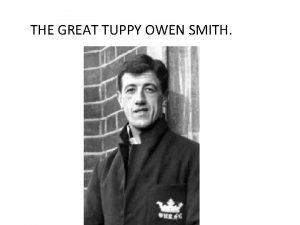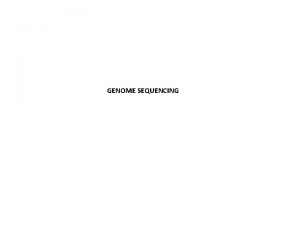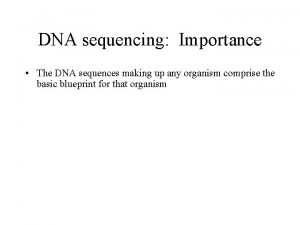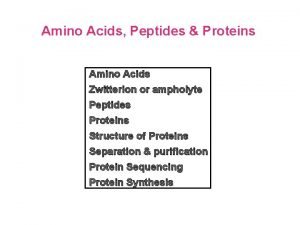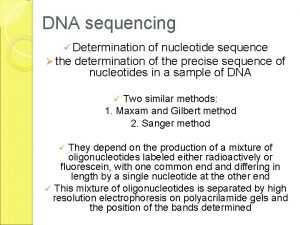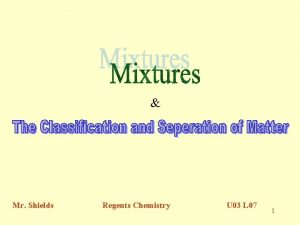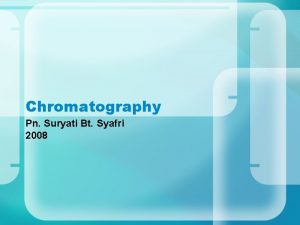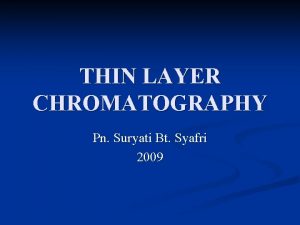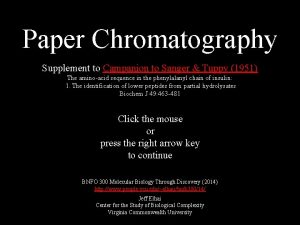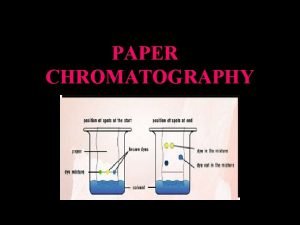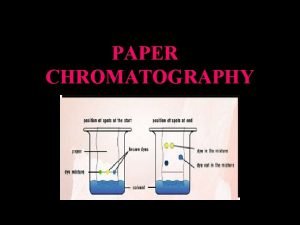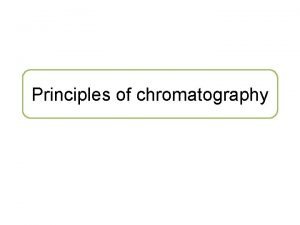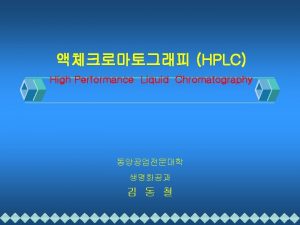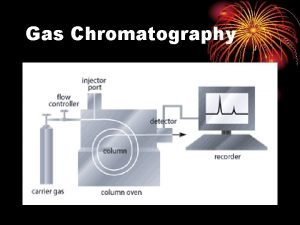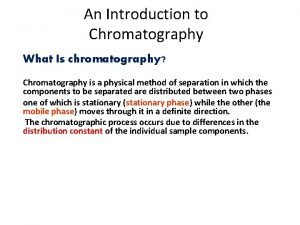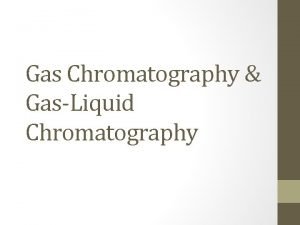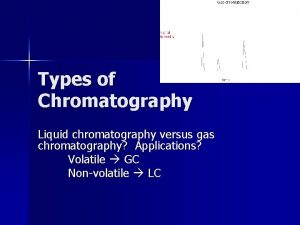Paper Chromatography Supplement to Campanion to Sanger Tuppy












- Slides: 12

Paper Chromatography Supplement to Campanion to Sanger & Tuppy (1951) The amino-acid sequence in the phenylalanyl chain of insulin: 1. The identification of lower peptides from partial hydrolysates Biochem J 49: 463 -481 Click the mouse or press the right arrow key to continue BNFO 300 Molecular Biology Through Discovery (2014) http: //www. people. vcu. edu/~elhaij/bnfo 300/14/ Jeff Elhai Center for the Study of Biological Complexity Virginia Commonwealth University

Paper Chromatography Sanger and Tuppy's experiment relied on their ability to separate fragments of insulin from each other and then to separate the amino acid components of these fragments. I've represented the mixture as distinguishable, colored elements. Of course in the actual experiment they were colorless and invisible. To separate the components, the mixture of peptides was sampled…

Paper Chromatography …and the mixture was spotted onto a sheet of conventional filter paper.

Paper Chromatography The filter paper was placed in a glass box containing an organic solvent. I've stopped time at this point so you can consider what will happen next. The solvent will be drawn up into the paper by capillary action, and the flow will push the compounds in the spot upwards. Let's watch…

Paper Chromatography The different compounds move at different speeds. . . Why is that? I'll stop the process again to give us time to look at what's going on at the molecular level.

Paper Chromatography We are now sitting on the surface of the filter paper. Paper, of course, is just processed cellulose, and cellulose, composed of glucose, adsorbs water from the air, creating a pond separate from the organic solvent that bathes the paper. Suppose that is hydrophobic and is hydrophilic. That means that , but not , will interact with the water surrounding the cellulose, thereby slowing it down. Try it… organic solvent water

Paper Chromatography Back to the experiment… The differences in hydrophobicity amongst peptide fragments can be very small, and in this example, there is poor separation between the pink and red and the blue and yellow components of the mixture. To improve the separation, Sanger and Tuppy used two-dimensional paper chromatography. The filter paper was rescued from the chromatography chamber and the solvent allowed to evaporate.

Paper Chromatography The filter paper was turned 90 degrees. And the old organic solvent was removed from the chromatography chamber, replaced by a different solvent with a low p. H.

Paper Chromatography Now the filter paper was returned to the chromatography chamber, containing the new solvent. What will happen now? What difference does it make that the p. H is lower than before? Suppose that two components are equally hydrophilic at high p. H but at low p. H (high proton concentration) one of them is able to take on an additional proton, changing its charge and its hydrophobicity. Then the one of the two will interact differently with the water surrounding the cellulose.

Paper Chromatography Now the red and yellow components travel slowly, because at the low p. H… …how are they different at the low p. H compared to what they were at the higher p. H?

Paper Chromatography Removing the filter paper from the chromatography chamber, the spots can be identified, and… I've represented the mixture as distinguishable, colored elements. Of course in the actual experiment they were colorless and invisible. …wait a second! At the beginning of this simulation I said:

Paper Chromatography So actually, the filter paper will look white and featureless. Of course, there are ways to render the spots visible and in some cases to identify what's there, … …but that's for another time. For now, bear in mind that separation can be dicey and identification equivocal. But for relying on just a piece of paper, the technique works pretty well!
